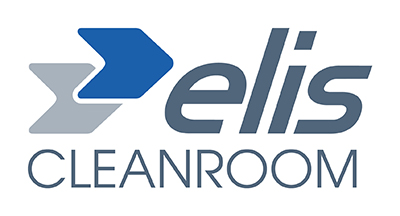The cleanroom build sector is a competitive industry, with expertise and experience being hugely important to selecting the right contractor.
PPE expert Elis Cleanroom saw the exact ramifications of this when choosing a principal contractor for the company’s new cleanroom laundry build in Cheshire, UK. Halfway through the build, this principle contract missed several key deadlines and was significantly behind schedule.
Cleanroom design and build expert Guardtech Group was originally brought on just to build the ISO Class 5-8 cleanrooms, however following the missed deadlines, the company was asked to take on the entire project.
2024 saw progress for a lot of the top semiconductor company’s projects
This change in principal contractor got the project back on track, with the cleanroom laundry being completed to Elis’ satisfaction. However, this project shows how important picking for experience and expertise is.
This article looks at some of the most talked about cleanroom projects from 2024, and the interesting challenges they tackled in order to complete successfully.
Semiconductor builds
2024 saw progress for a lot of the top semiconductor company’s projects, but the last few years have been a rollercoaster.
In this sector, Intel progressed its facilities across the US, with delays seen in Ohio. The end of the year saw the CEO step down following a “challenging year”.
In this vein, most major companies are looking to stabilise their business after the last few years. Millions are still being pushed into building capacity for this by companies like Micron, TSMC, Texas Instruments, Samsung and others.
Major locations for these semiconductor facilities are the US, Germany, and varying locations across Asia. For those with hi-tech cleanroom expertise, this can be a huge win and undertaking.
The last few years have been a rollercoaster
In Germany, Clean Room Consulting topped out on a new 12' wafer fab for Vishay. Originally announced to cost around €300-350m according to EE Times Europe, the facility is now estimated to cost around €374m.
Another build in Germany that reached a milestone in 2024, was ESMC’s first semiconductor fab. The joint venture between TSMC, Robert Bosch, Infineon Technologies, and NXP Semiconductors, which is estimated to exceed €10 billion in cost, broke ground in November, directly opposite Bosch’s wafer fab in Dresden.
Not far away, in the Netherlands, ASML collaborated with Eindhoven University of Technology (TU/e) on a new cleanroom building for research. Between the two, the facility will receive €180m in funding, creating a win-win situation for both organisations.
In the US, cleanroom build expert Mecart delivered a fascinating project, converting an old data centre into a semiconductor fab.
The 10,000 sqft facility in Arizona provides an ISO Class 7 cleanroom segmented into five spaces. With a ballroom-inspired design, a raised floor with dual-height air returns, a customised HVAC system with night mode and a self-supporting modular cleanroom structure, this project took on a lot of challenges to create the final finished environment.
In Singapore, L&K Engineering won a major engineering contract for the joint venture between Vanguard International Semiconductor and NXP Semiconductors.
The collaborative organisation is called VisionPower Semiconductor Manufacturing Company (VSMC) and broke ground in December 2024.
The China-based engineering company will have to adhere to strict sustainability terms, and the $7.8 billion fab will be built to the Singapore Green Mark standards.
These efforts can appear performative due to over-reliance on carbon offsets
Sustainability in semiconductor projects has been a huge influence in 2024. While many semiconductor companies are making tangible strides to improve energy efficiency, water use, and emissions, the industry's massive energy and material requirements pose fundamental challenges.
In some cases, these efforts can appear performative due to over-reliance on carbon offsets, a lack of transparency in supply chain emissions and regulatory exemptions that allow growth at environmental costs.
Space-focused projects
Outside of semiconductors, aerospace manufacturing was another big use of cleanroom contractors in 2024. OHB Systems needed to create an ISO Class 5 cleanroom for a space telescope project. OHB put together a team that included C3, QleanAir, Hanselmann, Dastex, Merkle, Panterra and Dorfner to build the space in 5 days.
Viessmann Technologies (Vitech) also worked on a short lead time space-related application this year. The cleanroom expert worked on an ISO Class 8 modular solution for one of Airbus’ satellite cleanrooms in Madrid. Vitech designed an innovative air recirculation system for the project, that needed 15m high ceilings in just 26 weeks.
In the US, Edwards Mechanical Construction’s Director of Mechanical Construction, Troy Walls, told Cleanroom Technology that the company had completed an ISO Class 7 cleanroom prefabrication for a long-term client in aerospace manufacturing.
Modern methods such as modularity and prefabrication are being used to great benefit across many sectors
The room was designed to accommodate 60,000 CFM of conditioned air within approximately 5,000 sqft. "To ensure timeliness, we initiated the prefabrication process for all the ductwork, including hangers and insulation, in preparation for installation," Walls said.
It was clear from the projects in aerospace and semiconductor manufacturing, that modern methods such as modularity and prefabrication are being used to great benefit across many sectors.
Solar cells, batteries, and more
Other interesting applications of cleanrooms that saw growth in 2024 are solar cell manufacturing and battery manufacturing.
India-based TATA Projects completed a solar manufacturing project for First Solar in India this year, helping the US-based solar expert transition its production tech to the new geography.
This was a really interesting project for TATA as First Solar said it was the world’s first net-zero water withdrawal solar manufacturing facility.
It will be interesting to see in upcoming years how much this manufacturing sector continues to take off and what cleanrooms become the norm.
India-based TATA Projects completed a solar manufacturing project for First Solar in India this year
For battery manufacturing, Lionvolt contracted ABN Cleanroom Technology, CTS BeNeLux, and Cotes for its 3D Anode pilot production line. ABN took on the delivery and installation of cleanroom systems, CTS provided and positioned key components for cleanrooms and dryrooms, and Cotes took on dehumidification.
The increase in battery manufacturing in recent years has put a great emphasis on dry rooms in the industry. At the forefront of cleanroom technology, Fraunhofer IPA develops and tests new technologies for use in cleanrooms. In 2024, Fraunhofer chose cleanroom build expert CAT to build two new ISO Class 1 cleanrooms.
This would include two dry rooms where the pressure dew point must be able to individually and continuously be lowered to as low as -40 degrees.
All hi-tech manufacturing and research cleanrooms can have useful benefits to less controlled areas. With Google’s over $1 billion investment in a new UK data centre, any energy efficiency findings or particle control products could be useful. In fact, there is now a new accreditation launched by Capitoline detailing how to apply ISO 14644 to data centres.
Pharmaceutical builds
As long as humans exist there will be a need for pharmaceutical facilities to cure them. Novo Nordic, AstraZeneca and WuXi XDC all made huge announcements about facilities, and as such cleanrooms, in 2024.
In March,



